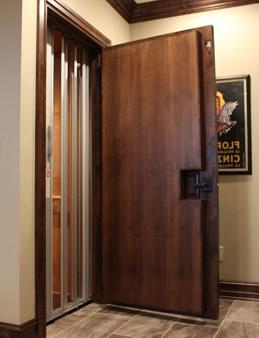Counterweight
A system of cables and stacked weights that provide a counterweight to the cab and passenger load weight. It's purpose is to make lifting the load more efficient and less taxing on the lifting motor.
 If you are building a new home, be sure your doors meet
this new distance code of the ¾” x 4” Rule.
If you are building a new home, be sure your doors meet
this new distance code of the ¾” x 4” Rule. The space between your entry doors and the gate on the car
can be dangerous for children.
The space between your entry doors and the gate on the car
can be dangerous for children. Door Build-Out Example
Door Build-Out Example
Need help evaluating the safety of your home elevator?